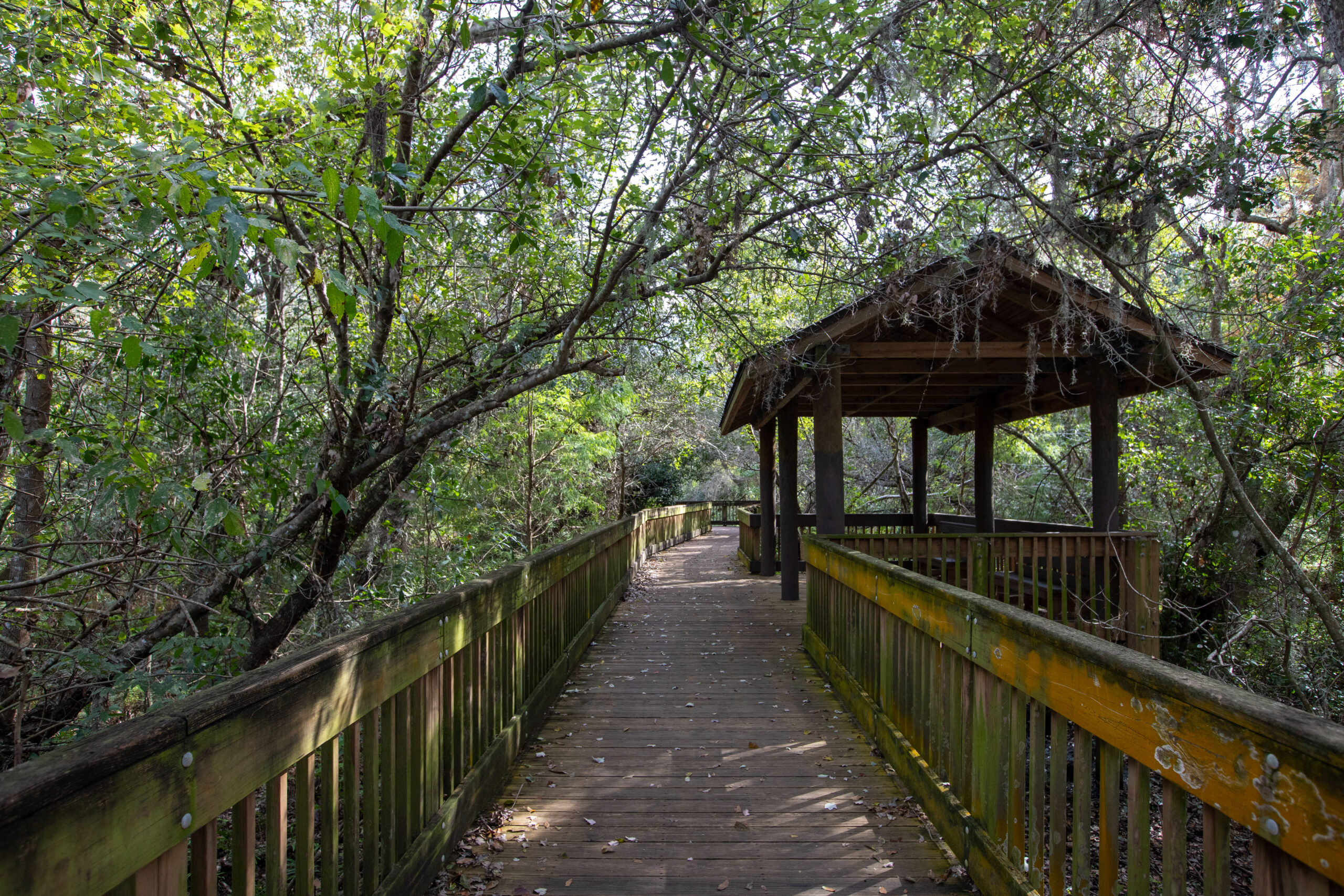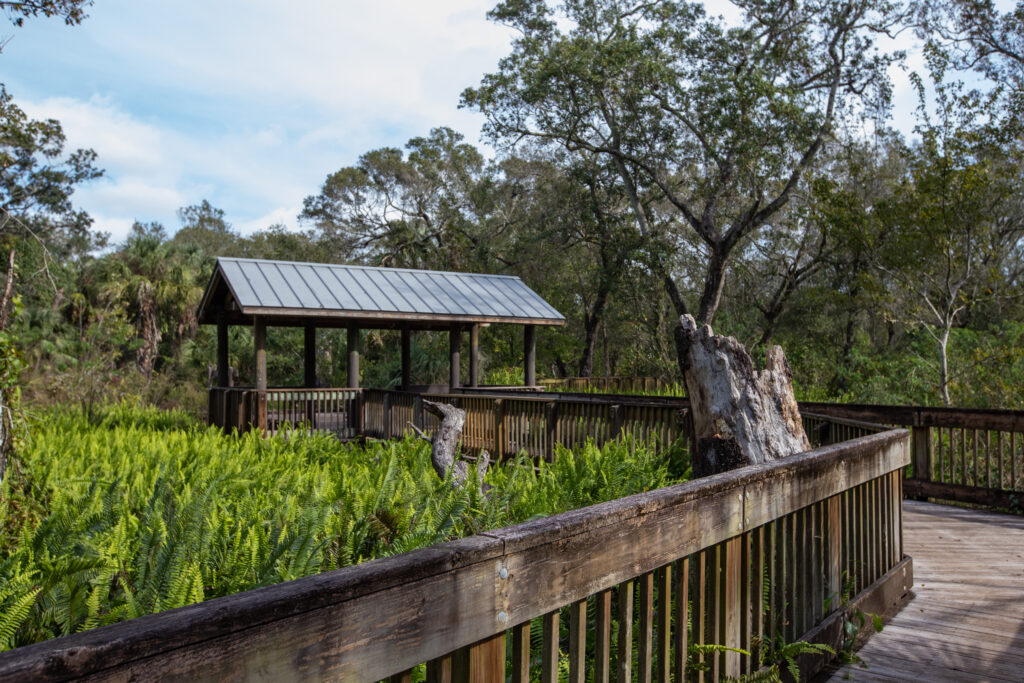
The bay area’s scenic beauty knows no bounds. Sparkling waters, breezy palm trees, wild Florida forests and wacky wildlife make exploring Greater Tampa Bay’s natural spaces and parks an adventure.
Greater Tampa Bay’s deep-jungle vibe is like something straight out of an adventurous summer blockbuster. Its vast bodies of wild, temperate land play nest to a beautiful habitat of flora and fauna. With such a varied ecosystem, even the naturally-aversed might accidentally spot a fantastical creature from time to time. Yet the traditional GTB spirit is attended by a certain thirst for scenic escapades, and it is easily quenched with a thorough investigation of teeming wildlife habitats.
In 2023, adventurers may no longer need a compass to explore the surrounding ecology, but that does not mean they cannot immerse themselves in the timeless serenity of being one with nature. They can still find themselves awed by the great outdoors. The wild beauty is safely on full display in GTB, and there is almost no end to the opportunities for hiking, kayaking, camping, birdwatching, fishing and more.

The Great Estuary
Something of a main event, the big blue body of water called Tampa Bay is as stunning as it is ecologically complex. In 1990, Congress declared it an “estuary of national significance.” As Florida’s biggest open-water estuary at approximately 400 square miles, its freshwater sources merge into more than 100 tributaries. Due to all that freshwater flow, Tampa Bay’s watershed ends up merging with five counties, covering 2,200 square miles.
At only 12 feet at its deepest, Tampa Bay’s water is fairly shallow, splotched with tidal mudflats and beds of seagrass — home to more than 200 species of fish. Marine life is not limited to fish, manatees and bottlenose dolphins populate the bay, while shelled species like oysters, shrimp and crab make frequent appearances. Of course, coastal territories are as much home to birds as they are to marine life, and near the bay, unfortunate fish and other watery invertebrates may run afoul of strident winged hunters like herons, egrets and laughing gulls.
Winding Wetlands
Salt marshes and wetlands rife with marine life are all part and parcel of GTB. These rich, fragrant mazes of flora line the trails in greater bodies of dark blue-brown waters, their muddy floors hidden microcosms of aquatic life. In fact, salt marshes are neither land nor sea, but the mighty ocean presides always over the region — the local tidal wetlands are indeed brackish. Thriving in these placid, half-salted stretches of drink are numerous mangroves, salt-tolerant trees with visible root networks that serve as underwater sanctuaries for all kinds of fish.
At sunset, a cotton-candy kaleidoscope plays out in slow motion over these vast expanses of wetlands. The dimming sky draws darker hues from saltmarsh cordgrass and black needlerush, which adapted to high-salt conditions. Invertebrates huddle at the bases of plant stalks, flitting through the mud for algae snacks. Herons, egrets, raccoons and bobcats enjoy routine dinners of shellfish, reptiles and smaller birds in the wetlands, set to the ambient chorus of multitudinous frogs grinding out their throaty mating calls.
Undercover Fauna: Where to Glimpse Rare Local Wildlife
Hillsborough River State Park
Located minutes from downtown Tampa, this park is riddled with rushing rivers, peaceful fishing ponds and flowers as unusual as they are beautiful — not to mention biking and hiking trails.
Commonly Sighted Here:
- Gopher tortoises
- Woodpeckers
- Owls
- Bobcats
Pet-Friendly?
- Dogs allowed if on a six-foot leash – cleanup required
Jay B. Starkey Wilderness Park
Offering 8,000 acres adjacent to the famous 43-mile Suncoast Trail, Jay Starkey offers all the standard park experiences such as hiking and biking, plus inline skating and a 7 ½-mile-long equestrian trail.
Commonly Sighted Here:
- Brown-headed nuthatch
- Wood stork
- Little blue heron
- Fiery skipper butterfly
- Sherman’s fox squirrel
- Hairy woodpecker
Pet-Friendly?
- Dogs allowed on a six-foot leash
Philippe Park
History buffs and nature enthusiasts are equally likely to cavort in Pinellas County’s oldest park. Enjoy the fresh air and a little history lesson to boot.
Commonly Sighted Here:
- Laughing gull
- Brown pelican
- White ibis
- Red-bellied woodpecker
- Tufted titmouse
Pet-Friendly?
- Dogs allowed on a leash
Terra Ceia State Park
This park boasts a whopping 2,000 acres of fresh and saltwater wetlands, mangrove forests, marshes and mudflats. The nine miles of hiking do not hurt, either.
Commonly Sighted Here:
- Eastern screech-owl
- Black vulture
- Nine-banded armadillo
Pet-Friendly?
- Dogs allowed on a leash
Lettuce Lake Conservation Park

Vegetation is in full bloom at Lettuce Lake Conservation Park. Expect scenic waterways and an observation tower with a panoramic park view. From a safe distance on the designated trails, visitors might even catch a glimpse of distant alligators.
Commonly Sighted Here:
- Gators
- Eastern indigo snake
- Gopher tortoise
- Sherman’s fox squirrel
- Tarpon
Pet-Friendly?
- Dogs allowed on a leash, but boardwalk is a no-pet zone.
Weedon Island Preserve
The perfect spot for kayaking through dense mangroves, this nature preserve is a favorite of local birdwatchers and wildlife lovers. Expect guided tours and strolling casually along the boardwalk. Be sure to bring a little bug spray in case of mosquito attacks.
Commonly Sighted Here:
- Southern leopard frog
- Eastern glass lizard
- Greenhouse frog
- American alligator
- Brown anole
Pet-Friendly?
- No pets of any kind are allowed in this park.
Sawgrass Lake Park
Pinellas County’s Sawgrass Lake Park is known for its alligator-glimpsing potential. A nice, elevated boardwalk separates visitors from getting too close to nature while providing an incredible 360-degree view of the action.
Commonly Sighted Here:
- Herons
- Egrets
- Alligators
- Turtles
- Wood storks
Pet-Friendly?
- Pets are allowed in the park, not the boardwalk or nature center.
Fort De Soto Park

So named for the real-life historical fort at its core, Fort De Soto Park hails all the way from the Spanish-American War. Its less developed beaches mean more seclusion and peaceful communion with nature.
Commonly Sighted Here:
- Manatees
- Dolphins
- Bald eagles
- Brown pelicans
- Loons
Pet-Friendly?
Yes, and no leash required. De Soto even features a Paw Playground with watering hoses for thirsty pups.
By Drew Mortier.





